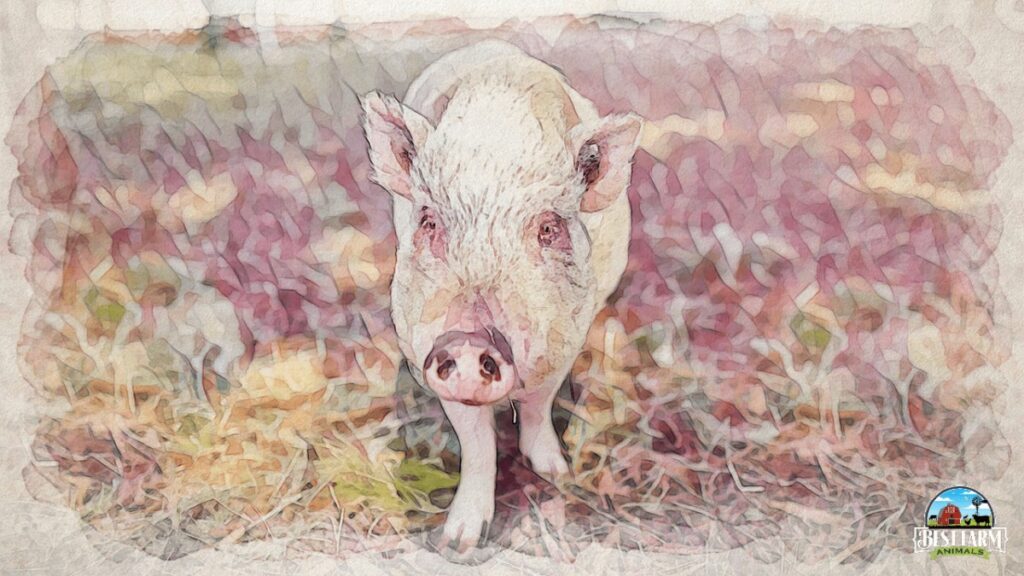Sudden Onset of Twitching Can Signal Porcine Stress Syndrome
Porcine stress syndrome (PSS) is a severe condition in pigs of all ages. PSS can be triggered by sudden muscle activity, such as when the herd is spooked and runs wildly. It’s more common in sows, weaners, and growers.
Porcine Stress Syndrome has several identifying symptoms including face twitching, rapid breathing for no reason, muscle tremors, a red rash, and a temperature above 106℉. Additional signs include overall muscle rigidness and an inability to walk. Severe cases of PSS can cause heart failure and death.
You will notice that your pig has developed PSS if they suddenly:
- Twitch in their face
- Begin to rapidly breathe shallowly for no other reason
- Display obvious muscle tremors
- Develop a blotchy and red rash
- Show an increased body temperature (106℉)
- Tremors in the tail
- Heart failure
- Sudden death
If your pig has developed PSS, you need to take action immediately, as it can cause death in as little as 20 minutes. However, if treatment is provided within the timeframe, your pig has a greater chance of recovery—death results after 20 minutes from seizures and heart failure.
Steps to Take if Your Pig Has a Sudden Onset of Twitching:
You must take immediate action as soon as you notice your pig twitching. Pigs can die from PSS in 20 minutes. Even taking immediate action may not save your pig. First, try to bring your pig’s temperature down to a normal range. You can spray them with cold water. If you are new to PSS, you probably want to call your vet to get fast help. Many vets recommend sedating a pig with Porcine Stress Syndrome in an attempt to save its life.
Avoid further stressing out your pig or moving it. Avoid additional unnecessary muscle activity. This means that you shouldn’t chase it around the pen trying to spray it or catch it.
Porcine Stress Syndrome only happens in pigs with genes that make them vulnerable. The only way to fully prevent PSS is to eliminate all pigs in your herd that have those genes.
Follow these steps immediately if you suspect your pig may have PSS:
- Bring your pig’s temperature down by spraying them with cold water.
- Try not to further stress or excite your pig.
- Sedate the pig with a tranquilizer.
- Try not to move your pig, and avoid unnecessary muscle activity.
- Seek immediate veterinary care and medication.
References
Iowa State University College of Veterinary Medicine Porcine Stress Syndrome (PSS)
My Most Used Pig Supplies
This list contains affiliate products. Affiliate products do not cost more but helps to support BestFarmAnimals and our goal to provide farm animal owners with accurate and helpful information.
Purina Pig Chow will last well (or Mazuri is popular, but I haven’t tried it), and the stainless steel non-skid bowls that will help keep the mess down.
A pig blanket to keep her warm. This one also has bright colors and helps to provide rooting without the destruction.
Pig Harness for walking and handling your pig. There are a lot to choose from, but this one is pretty easy to use. If you want one that has a separate leash, this looks like a good one.
A large crate for keeping her safe in your house at night and when you leave the house. This is essential. You’ll also want a litterbox, and I like mine with a lid for nighttime. Pine shavings are best, and you may be able to find them in larger quantities locally.
When you have accidents, Odoban will help eliminate odors. When you are potty training, these floor pads work great for keeping your house clean while training her to go in certain places.
You’ll also want an outdoor house to keep her warm when she gets outside time, an essential part of her development.
Dewormer- Ivermectin is the primary dewormer I use, although I do rotate with a non-ivermect ingredient once so that the worms don’t get immune to it.

